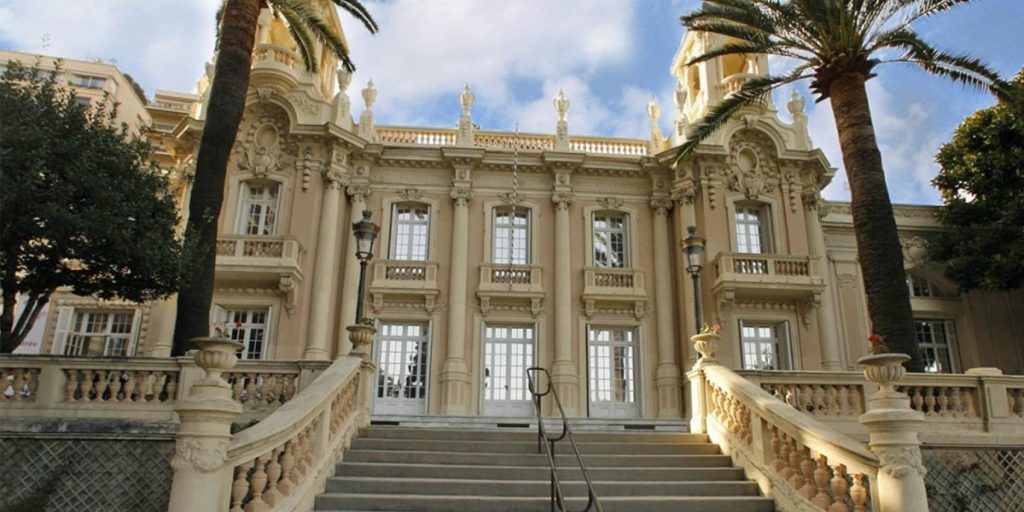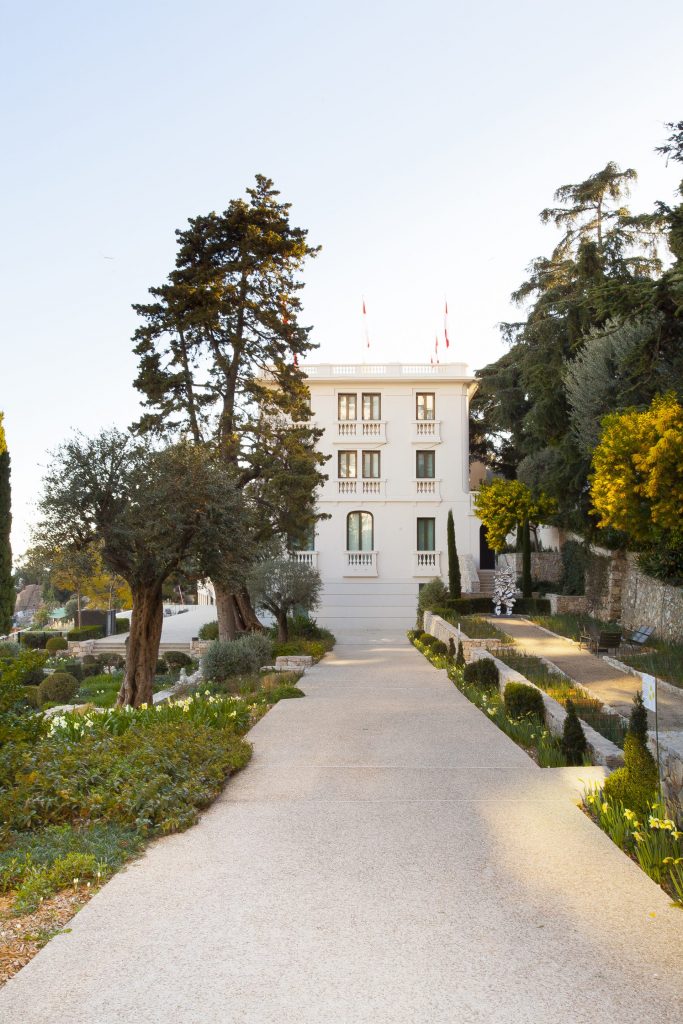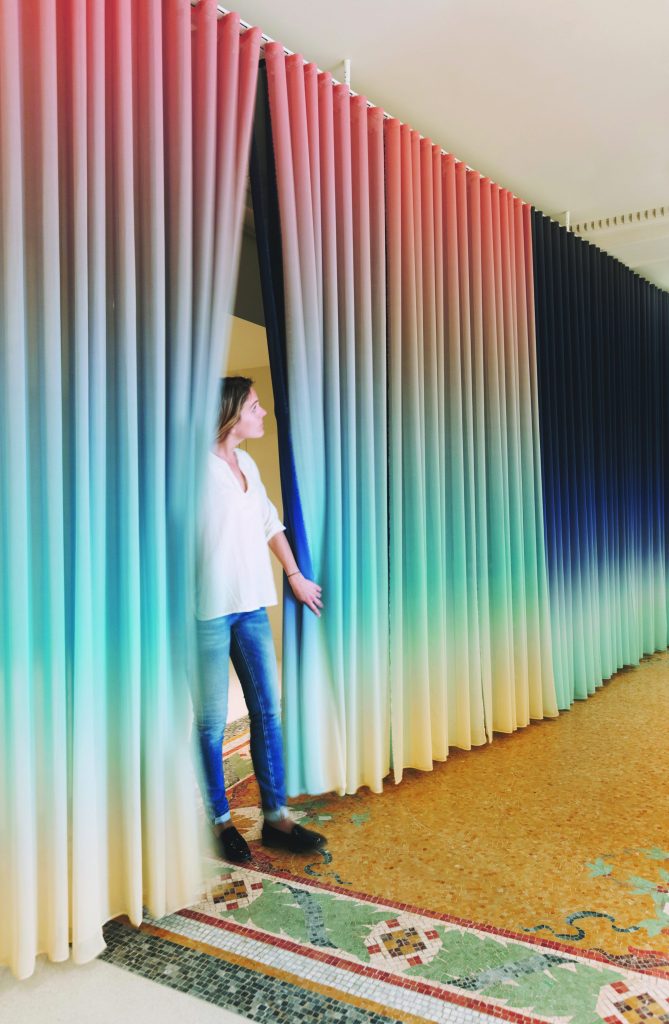Leading the art scene in Monaco, NMNM (or New National Museum of Monaco) aims to educate the public about the intimate links within the cultural, historical and artistic heritage of the Principality. A cultural project birthed by NMNM, named “Training For A Museum”, does just that. From consultations with key historians, restorers, designers, writers and artists, to brainstorming of the methodology in sharing these stories with the public, NMNM does not see it as just an exhibition, but a multi-faceted museographic project true to Monaco.
The NMNM comprises of two venues: Villa Paloma and Villa Sauber. Both venues may be found at each end of this tiny country, but are distinct in their very own ways. Villa Paloma’s pure white façade and interior is a stark contrast from Villa Sauber’s “Belle Epoque” style, the intricate details on the exterior shows elegance and majesty. Two exhibitions a year are held in each venue with two differing themes: Art and Performance at Villa Sauber; Art and Territory at Villa Paloma.

Villa Sauber
Championing the formidable NMNM is Marie-Claude Beaud, its passionate museum director. Benoit speaks with Marie-Claude to discover her plans for the art scene in Monaco.
AS THE HEAD OF THE NEW NATIONAL MUSEUM OF MONACO, COULD YOU TELL US A BIT ABOUT YOUR ROLE AND WHAT A TYPICAL DAY AT NMNM IS LIKE FOR YOU?
I must say there isn’t such a thing as a typical day at the NMNM!
I am the Director, and as such I lead along with the team all the activities of the museum: the preservation of the national and international heritage, the acquisition and production of new artworks, the exhibition program, the relationships with the Governmental entities and the Palace (HRH The Princess of Hanover being the President of the Museum’s and Acquisition Committee Board) and the usual every-day administrative tasks.
Of course, the development of international networks, both with public and private institutions worldwide and of privileged and personal relationships with art lovers are central in my mission. What I consider even more fundamental in a museum’s mission, and therefore a director’s role, is the ability to be a go-between. We need to develop our visitors’ curiosity and give them the keys to understand art and our projects, to extend their view and take pleasure in their discoveries. This idea of transmission has always been a motor for me.
WITH YOUR IMPRESSIVE CURRICULUM VITAE, WHAT DID YOU BRING TO THE NMNM?
I’m more interested in saying what brought me here. Like all the places I’ve worked at in my career, Monaco gives me the freedom to work in a way that makes sense to me as director of an art institution. Therefore, when the Royal Family first asked me to join the International Prize of Contemporary Art committee for the Fondation Prince Pierre de Monaco and later on to be at the head of the NMNM, I happily accepted.
Getting back to the initial question, I believe that I was and of course still am able to give the museum an international dimension. My relationships to the artists and creation as well as my desire to make culture available to all and again, give people the keys to understand instead of just having a speculative idea of the art world and being able to work with a team and make the best of the qualities of each of its members must also have made a difference.
WHAT DO YOU THINK ARE THE GREATEST CHALLENGES YOU FACE AS BEING PART OF A MAJOR INSTITUTION OF MONACO’S ART SCENE?
I would say that it is obviously to make our mark. Compared to other institutions such as Les Ballets de Monte-Carlo, L’Orchestre Philharmonique de Monte-Carlo, L’Opéra de Monte-Carlo, the Grimaldi Forum or the Oceanographic Museum, the NMNM is quite recent in its current form since Villa Paloma opened its doors in 2010. It takes time for a museum to take its rightful place, both locally and internationally.
Before 2009 of course, the idea of having an art museum in Monaco was not an obvious one. The public is not necessarily used to visiting exhibitions regularly and Monaco wasn’t at that time known in that field worldwide. I believe that we’ve already done a great work towards change. That was also helped by the collaborations we’ve been able to build with the aforementioned local institutions and art schools. But we still have a lot of work to reach our goals.

Villa Paloma
DO YOU HAVE PLANS TO OPEN YOUR INSTITUTION TO CONTEMPORARY ASIAN ART IN THE FORESEEABLE FUTURE?
We’ve worked with Asian artists in the past (In 2010, we advised the Oceanographic Museum of Monaco to present a site-specific piece – Wu Zei – by Huang Yong Ping) and we have works from Asian artists in our collections (Shimabuku and Wang Du among others). I’ve also personally collaborated with a lot more Asian artists or curators in my career, such as Chen Zhen, Cai Guo Qiang, I. M. Pei (architect), Hou Hanru (curator and current artistic director of the Maxxi in Rome), Fei Dawei (Paris-based art critic and curator). Other than that, I was very interested in “The Land”, a land reclamation project in rural Thailand in the 90’s where I was able to meet Rirkrit Tiravanija amongst others.

From left to right: Marie-Claude Beaud; Françoise Gamerdinger, Director of Cultural Affairs; Patrice Cellario, Minister of the Interior; and Björn Dahlström. © Government Communication Department / Michael Alesi
(*From 1 April 2021, Björn Dahlström will take over Marie-Claude Beaud as the next Director of the New National Museum of Monaco)

